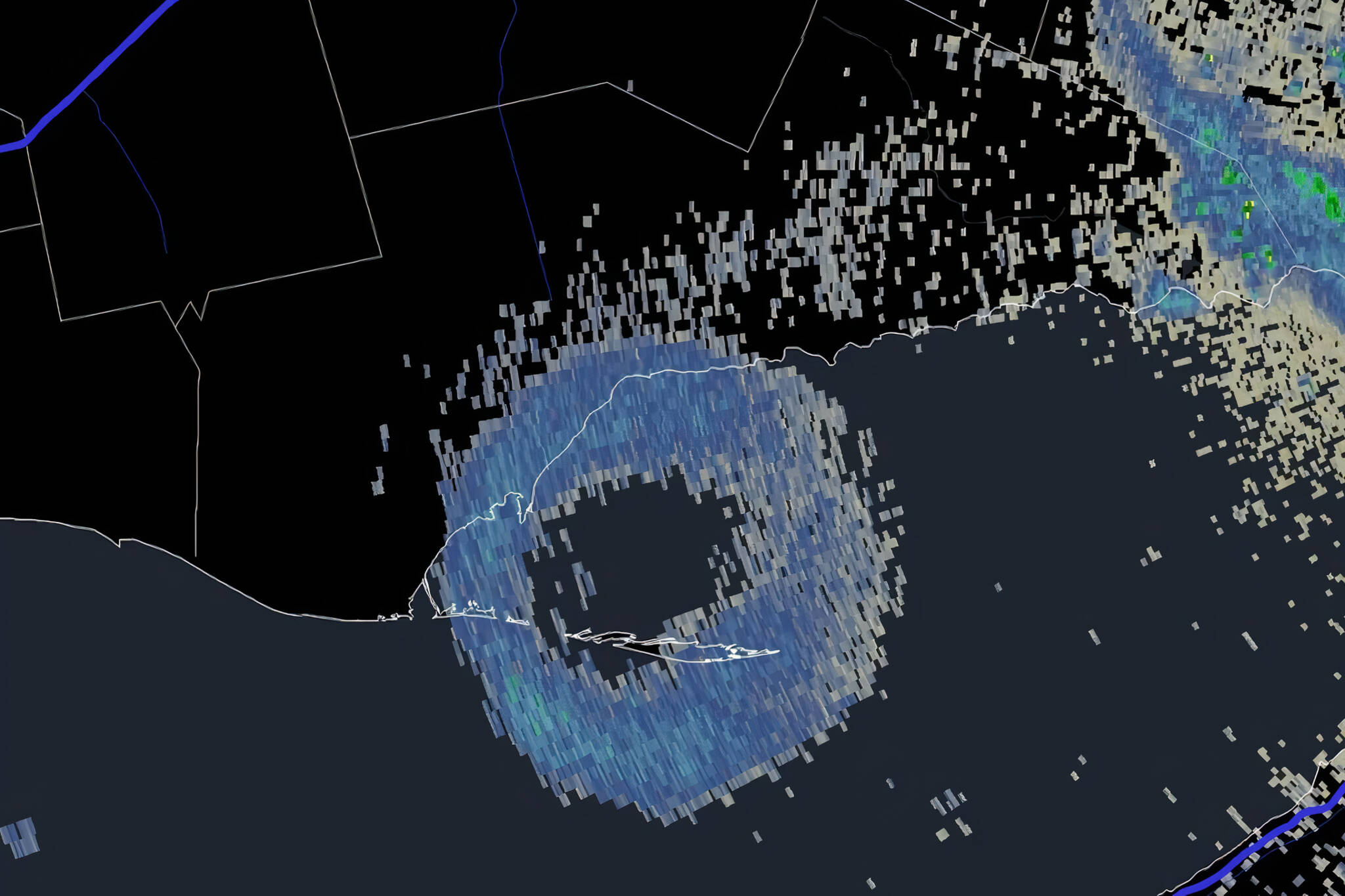
Spectacular Ontario 'bird doughnut' pops up on U.S. weather radar
The immutable power of nature was on full display this weekend in Long Point, Ontario, where an estimated half-a-million migratory birds had stopped to rest en route to their winter homes down south.
So many birds were roosting in Long Point on Sunday morning, in fact, that they set off weather radar alerts as far as 170 km away when taking to the sky as a group in search of breakfast.
Resulting scanner images from Buffalo, New York, are blowing minds all over the web today, given the cool shape and sheer scale of what they represent.
Behold, the viral Long Point bird doughnut (or "roost ring," if you want to get technical) of 2022:
It appears that the radar is showing birds taking off from Long Point Ontario on the shoreline of Lake Erie this morning! Amazing to see! It appears like a small group leaving Presque Isle also, Happy Sunday! @TomNiziol @WeatherNation @ChristinaReisWx @NWSBUFFALO @KrisRuggieroWx pic.twitter.com/xbQSdFY7x5
— Brian Sullivan (@Sully_1222) August 21, 2022
As first reported by The CBC's Colin Butler on Tuesday, some National Weather Service images taken at a U.S. radar station in Buffalo started making waves among ornithologists and meteorologists alike on August 21.
Grimsby, Ontario-based scientist Corey Elder posted a still from the radar to Twitter around 7:20 a.m. on Sunday morning with the caption "perfect roost ring off long point this morning!"
Elder explained to curious followers that they were seeing "thousands of birds leaving their roosting site. So many that they're picked up on radar."
The group of some 500,000 birds is thought to consist mainly of swallows and purple martins, all of them currently getting ready for migration as summer comes to an end.
And a short video from a distance at what it looks like on the ground. pic.twitter.com/r3PogKkpwL
— Long Point Bird Obs. (@LongPointBirdOb) August 21, 2022
Elder's image has gained some traction for illustrating the volume and density of sky-borne animals around this time of year at Long Point, which is one of the most important biospheres in North America for migrating birds.
His bird doughnut radar shot isn't the only one to hit Twitter in recent days, however — not from Sunday or even this season.
The Long Point Bird Observatory (LPBO), located within the UNESCO-recognized Long Point Biosphere Reserve off the northern shores of Lake Erie, has been providing its own updates on the massive roost for more than a week now via Twitter.
"Excellent departure of over 1/2 million swallows and purple martin from Long Point through the rain," wrote the LPBO, which has been studying birds in the region since 1960. "The majority of the birds are concentrating in an area near Breakwater and the Big Creek National Wildlife Area."
Too amazing not to post again. Over half a million + #swallows and #purplemartins departing from a roost near our Breakwater station. They are primarily using patches of Phragmites which is being eradicated - one of the greatest remaining patches is out there. @BirdsCanada pic.twitter.com/Uc1DGt44Io
— Long Point Bird Obs. (@LongPointBirdOb) August 17, 2022
With the largest freshwater sand spit in the world, Long Point (a small hamlet within Norfolk County) attracts as many as 400 different bird species.
The peninsula extends some 32 km down into Lake Erie, attracting large numbers and concentrations of birds, insects and bats during migration each season.
"The resultant large concentrations of migratory animals allow us to count and monitor many species, as they migrate north in spring and south in fall," reads the LPBO's website.
"Counting birds on migration is particularly valuable for monitoring populations of species that breed in northern Canada, in areas that are inaccessible to more conventional monitoring methods such as the Breeding Bird Survey."
Not a UFO. Just migratory birds taking off from Long Point in search of their breakfast. I'm in search of the same. See you at Noon on @WKBW! #WNY pic.twitter.com/PAOv6IqRte
— Josh Nichols (@wnywxguy) August 24, 2022
While rarely as perfectly concentric as the one spotted on Sunday morning at Long Point, The U.S. National Weather Service says that roost rings do happen with some regularity along migratory paths.
"Beginning around the middle of summer, curious expanding doughnut patterns often appear just before sunrise... These features, known as 'roost rings,' occur when the radar beam detects thousands of birds taking off from their roosting sites around dawn to forage for insects," reads the agency's website.
"Leading up to fall migration, a number of bird species are known to gather at large communal roosting sites, which are often detected by NWS Doppler radar. The observed mid to late summer roost rings are most likely tied to purple martins, which congregate in enormous colonies during this time period once their fledging period has ended."
The ring pattern is caused by these birds departing from their roosting sites in various directions.
"As they travel farther from their roosting sites and reach higher altitudes in lower densities, the birds show up on radar as expanding, fading rings until they either fly above or below the radar beam and are no longer detected," writes the NWS.
"Purple martins typically return to the same roosting sites in the evening, which are usually situated near bodies of water. As a result, the roost rings are often observed on radar at the same locations over the course of several mornings."
Latest Videos
Latest Videos
Join the conversation Load comments







